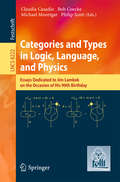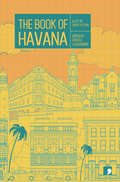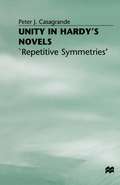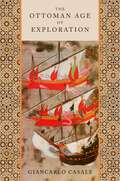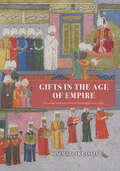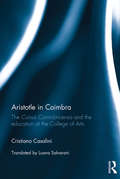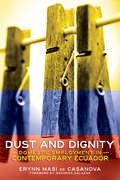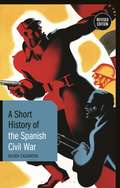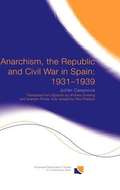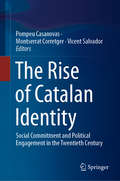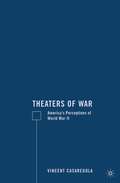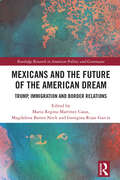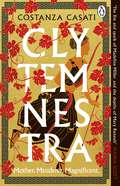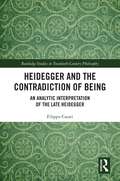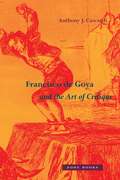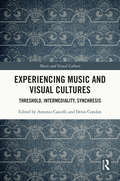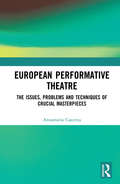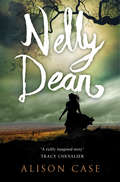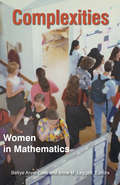- Table View
- List View
Categories and Types in Logic, Language, and Physics: Essays dedicated to Jim Lambek on the Occasion of this 90th Birthday (Lecture Notes in Computer Science #8222)
by Claudia Casadio Bob Coecke Michael Moortgat Philip ScottFor more than 60 years, Jim Lambek has been a profoundly inspirational mathematician, with groundbreaking contributions to algebra, category theory, linguistics, theoretical physics, logic and proof theory. This Festschrift was put together on the occasion of his 90th birthday. The papers in it give a good picture of the multiple research areas where the impact of Jim Lambek's work can be felt. The volume includes contributions by prominent researchers and by their students, showing how Jim Lambek's ideas keep inspiring upcoming generations of scholars.
The Book Of Havana: A City In Short Fiction (Reading the City)
by Orsola Casagrande Daniel Chavarria Irina J. Davidenko Eduardo Del Llano Ahmel Echevarría Peré Jorge Enrique Lage Laidi Fernández de Juan Eduardo Heras León Cinthia R. Paredes Francisco López Sacha Eduardo Angel SantiestebanWhen a history teacher decides to throw out an old, threadbare Cuban flag, he doesn’t plan for the air of suspicion that quickly descends on him… A woman’s attempt to register ownership of her family home draws her into a bureaucratic labyrinth that requires a grasp of higher mathematics to fully comprehend… On the day of their graduation, a group of students spend the night drinking around the ‘Fountain of Youth’, ironically celebrating the bright future that doesn’t await them… The stories gathered in this anthology reflect the many complex challenges Havana’s citizens have had to endure as a result of their country’s political isolation – from the hardships of the ‘Special Period’, to the pitfalls of Cuba’s schizophrenic currency system, to the indignities of becoming a cheap tourist destination for well-heeled Westerners. Moving through various moments in its recent history, as well as through different neighbourhoods – from the prefab, Soviet-era maze of Alamar, to the bars and nightclubs of the Malecón and Vedado – these stories also demonstrate the defiance of Havana: surviving decades of economic disappointment with a flair for the comic, the surreal and the fantastical that remains as fresh as the first dreams of revolution. Translated from the Spanish by Orsola Casagrande and Séamas Carraher.
The Ottoman Age of Exploration
by Giancarlo CasaleIn 1517, the Ottoman Sultan Selim "the Grim" conquered Egypt and brought his empire for the first time in history into direct contact with the trading world of the Indian Ocean. During the decades that followed, the Ottomans became progressively more engaged in the affairs of this vast and previously unfamiliar region, eventually to the point of launching a systematic ideological, military and commercial challenge to the Portuguese Empire, their main rival for control of the lucrative trade routes of maritime Asia. The Ottoman Age of Exploration is the first comprehensive historical account of this century-long struggle for global dominance, a struggle that raged from the shores of the Mediterranean to the Straits of Malacca, and from the interior of Africa to the steppes of Central Asia. Based on extensive research in the archives of Turkey and Portugal, as well as materials written on three continents and in a half dozen languages, it presents an unprecedented picture of the global reach of the Ottoman state during the sixteenth century. It does so through a dramatic recounting of the lives of sultans and viziers, spies, corsairs, soldiers-of-fortune, and women from the imperial harem. Challenging traditional narratives of Western dominance, it argues that the Ottomans were not only active participants in the Age of Exploration, but ultimately bested the Portuguese in the game of global politics by using sea power, dynastic prestige, and commercial savoir faire to create their own imperial dominion throughout the Indian Ocean.
The Ottoman Age of Exploration
by Giancarlo CasaleIn 1517, the Ottoman Sultan Selim "the Grim" conquered Egypt and brought his empire for the first time in history into direct contact with the trading world of the Indian Ocean. During the decades that followed, the Ottomans became progressively more engaged in the affairs of this vast and previously unfamiliar region, eventually to the point of launching a systematic ideological, military and commercial challenge to the Portuguese Empire, their main rival for control of the lucrative trade routes of maritime Asia. The Ottoman Age of Exploration is the first comprehensive historical account of this century-long struggle for global dominance, a struggle that raged from the shores of the Mediterranean to the Straits of Malacca, and from the interior of Africa to the steppes of Central Asia. Based on extensive research in the archives of Turkey and Portugal, as well as materials written on three continents and in a half dozen languages, it presents an unprecedented picture of the global reach of the Ottoman state during the sixteenth century. It does so through a dramatic recounting of the lives of sultans and viziers, spies, corsairs, soldiers-of-fortune, and women from the imperial harem. Challenging traditional narratives of Western dominance, it argues that the Ottomans were not only active participants in the Age of Exploration, but ultimately bested the Portuguese in the game of global politics by using sea power, dynastic prestige, and commercial savoir faire to create their own imperial dominion throughout the Indian Ocean.
Gifts in the Age of Empire: Ottoman-Safavid Cultural Exchange, 1500–1639 (Silk Roads)
by Sinem Arcak CasaleExplores the Safavid and Ottoman empires through the lens of gifts. When the Safavid dynasty, founded in 1501, built a state that championed Iranian identity and Twelver Shi'ism, it prompted the more established Ottoman Empire to align itself definitively with Sunni legalism. The political, religious, and military conflicts that arose have since been widely studied, but little attention has been paid to their diplomatic relationship. Sinem Arcak Casale here sets out to explore these two major Muslim empires through a surprising lens: gifts. Countless treasures—such as intricate carpets, gilded silver cups, and ivory-tusk knives—flowed from the Safavid to the Ottoman Empire throughout the sixteenth century. While only a handful now survive, records of these gifts exist in court chronicles, treasury records, poems, epistolary documents, ambassadorial reports, and travel narratives. Tracing this elaborate archive, Casale treats gifts as representative of the complicated Ottoman-Safavid coexistence, demonstrating how their rivalry was shaped as much by culture and aesthetics as it was by religious or military conflict. Gifts in the Age of Empire explores how gifts were no mere accessories to diplomacy but functioned as a mechanism of competitive interaction between these early modern Muslim courts.
Aristotle in Coimbra: The Cursus Conimbricensis and the education at the College of Arts
by Cristiano CasaliniAristotle in Coimbra is the first book to cover the history of both the College of Arts in Coimbra and its most remarkable cultural product, the Cursus Conimbricensis, examining early Jesuit pedagogy as performed in one of the most important colleges run by the Society of Jesus in the sixteenth century. The first complete philosophical textbook published by a Jesuit college, the Cursus Conimbricensis (1592–1606) was created by some of the most renowned early Jesuit philosophers and comprised seven volumes of commentaries and disputations on Aristotle’s writings, which had formed the foundation of the university philosophy curriculum since the Middle Ages. In Aristotle in Coimbra, Cristiano Casalini demonstrates the connection between educational practices in a sixteenth-century college and the structure of a scholastic philosophical commentary, providing insight into this particular form of late-scholastic Aristotelianism through historiographical discourse. This book provides both a narrative of the historical background behind the publication of the Cursus and an analysis of the major philosophical and educational issues addressed by its seven volumes. It is valuable reading for all those interested in intellectual history, the history of education and the history of philosophy.
Aristotle in Coimbra: The Cursus Conimbricensis and the education at the College of Arts
by Cristiano CasaliniAristotle in Coimbra is the first book to cover the history of both the College of Arts in Coimbra and its most remarkable cultural product, the Cursus Conimbricensis, examining early Jesuit pedagogy as performed in one of the most important colleges run by the Society of Jesus in the sixteenth century. The first complete philosophical textbook published by a Jesuit college, the Cursus Conimbricensis (1592–1606) was created by some of the most renowned early Jesuit philosophers and comprised seven volumes of commentaries and disputations on Aristotle’s writings, which had formed the foundation of the university philosophy curriculum since the Middle Ages. In Aristotle in Coimbra, Cristiano Casalini demonstrates the connection between educational practices in a sixteenth-century college and the structure of a scholastic philosophical commentary, providing insight into this particular form of late-scholastic Aristotelianism through historiographical discourse. This book provides both a narrative of the historical background behind the publication of the Cursus and an analysis of the major philosophical and educational issues addressed by its seven volumes. It is valuable reading for all those interested in intellectual history, the history of education and the history of philosophy.
Dust and Dignity: Domestic Employment in Contemporary Ecuador
by Erynn Masi CasanovaWhat makes domestic work a bad job, even after efforts to formalize and improve working conditions? Erynn Masi de Casanova's case study, based partly on collaborative research conducted with Ecuador's pioneer domestic workers' organization, examines three reasons for persistent exploitation. First, the tasks of social reproduction are devalued. Second, informal work arrangements escape regulation. And third, unequal class relations are built into this type of employment. Accessible to advocates and policymakers as well as academics, this book provides both theoretical discussions about domestic work and concrete ideas for improving women's lives.Drawing on workers' stories of lucha, trabajo, and sacrificio—struggle, work, and sacrifice—Dust and Dignity offers a new take on an old occupation. From the intimate experience of being a body out of place in an employer's home, to the common work histories of Ecuadorian women in different cities, to the possibilities for radical collective action at the national level, Casanova shows how and why women do this stigmatized and precarious work and how they resist exploitation in the search for dignified employment. From these searing stories of workers' lives, Dust and Dignity identifies patterns in domestic workers' experiences that will be helpful in understanding the situation of workers elsewhere and offers possible solutions for promoting and ensuring workers' rights that have relevance far beyond Ecuador.
A Short History of the Spanish Civil War: Revised Edition (Short Histories)
by Julián CasanovaIn this revised edition of A Short History of the Spanish CivilWar, Julián Casanova tells the gripping story of the SpanishCivil War. Written in elegant and accessible prose, the book chartsthe most significant events and battles alongside the mainplayers in the tragedy. Casanova provides answers to someof the pressing questions (such as the roots and extent ofanticlerical violence) that have been asked in the 70 yearsthat have passed since the painful defeat of the SecondRepublic. Now with a revised introduction, Casanova offersan overview of recent historiographical shifts; not least thewielding of the conflict to political ends in certain strandsof contemporary historiography towards an alarming neo-Francoist revisionism. It is the ideal introduction to theSpanish Civil War.
Anarchism, The Republic And Civil War In Spain: 1931-1939 (PDF)
by Julián Casanova Andrew Dowling Graham I. K. PollockThe Spanish Civil War became the setting for the struggle between revolution and counter-revolution as well as being, for many outsiders, the place of armed conflict between the forces of democracy and fascism. This book is a synthesis of political, social and cultural history concerning the anarchist revolution during the Spanish Civil War.
The Rise of Catalan Identity: Social Commitment and Political Engagement in the Twentieth Century
by Pompeu Casanovas Montserrat Corretger Vicent SalvadorThis volume helps us to understand that the current political disorders in Catalonia have deep cultural roots. It focuses on the rise of Catalan cultural, national and linguistic identity in the 20th century. What is happening in Catalonia? What lies behind its political conflicts? Catalan identity has been evolving for centuries, starting in early medieval ages (11th and 12lve centuries). It is not a modern phenomenon. The emergence of imperial Spain in the 16 c. and the French Ancien Régime in the 17 c. correlates with a decline of Catalan culture, which was politically absorbed by the Spanish state after the conquest of Barcelona in 1714. However, Catalan language and culture flourished again under the stimulus of the European Romantic Nationalism movement (known as the Renaixença in Catalonia). During the first Dictatorship (Primo de Rivera, 1923-1930), the Spanish Civil War (1936-1939), and the long Francoist era (1939-1975), Catalan language and culture were repressed, yet refurbished and reconstructed at the same time. This rise of a plural, complex, and non-homogeneous Catalan identity constitutes the subject matter of this volume. National conflicts that emerged later in the Spanish democratic state leant heavily on the life engagement and vital commitment experienced by the entrenched intellectual movements of the twentieth century in Catalonia, Valencian Country and the Balearic Islands. This book reveals the cultural and literary grassroots of these conflicts.
Theaters of War: America’s Perceptions of World War II
by V. CasaregolaHistorian Vincent Casaregola examines the portrayal of WWII in popular culture and how that protrayal has changed over time. By examining WWII films, literature, theatre and art from the Cold War era, the Vietnam War, the Reagan years, and present day, he seeks to understnad the part played by current politics, events and conflicts.
Mexicans and the Future of the American Dream: Trump, Immigration and Border Relations (Routledge Research in American Politics and Governance)
by Maria Regina Martínez Casas Magdalena Barros Nock Georgina Rojas GarcíaMexicans and the Future of the American Dream examines the lives of Mexican society and government officials in the United States. The 2016 U.S. Presidential election marked a defining moment in the lives of Mexicans in the United States. It rekindled nightmares in many Mexicans and pitted a new generation of Mexicans and Mexican Americans against a shift in politics. In this book, national experts and former government officials explore the direction and magnitude of Donald J. Trump’s shifts in immigration policy in three areas: consular strategies put in motion after the election, drugs, and bilateral relations. Insights from nineteen Mexican consulates throughout the U.S. territory, in states both favorable and against immigration, demonstrate shifting perspectives of government officials and that of Mexicans visiting consulates for formalities, getting orientation on a range of topics, or just to asking for help. Mexicans and the Future of the American Dream will be of interest to advanced students and researchers of Politics, Sociology, History, Ethnic Studies and American Studies.
Clytemnestra: The spellbinding retelling of Greek mythology’s greatest heroine
by Costanza CasatiMother. Monarch. Murderer. Magnificent . . . meet Clytemnestra, the ancient world's most wronged woman . . .'Vivid with fury, passion and strength, this is a fabulous myth retelling' JENNIFER SAINT'A blaze of a novel, fiery and furious - and alight with murderous revenge' DAILY MAIL__________She is born to a king but marries a tyrant.She watches helplessly as he sacrifices her child to the gods.She bides her time. She plots revenge. She knows how to play this game.If power will not be given to her, then she will take it for herself.She is Clytemnestra.-----------------------'A passionate picture of a fiercely patriarchal society and her heroine's refusal to be bound by its rules'Sunday Times'A powerhouse of a novel. Clytemnestra's rage, heartbreak and determination radiate off the page' ELODIE HARPER'A thrilling tale of power and prophecies, and the fierce Queen who fought back at those who wronged her' COSMOPOLITAN
Heidegger and the Contradiction of Being: An Analytic Interpretation of the Late Heidegger (Routledge Studies in Twentieth-Century Philosophy)
by Filippo CasatiThis book offers a clear, analytic, and innovative interpretation of Heidegger’s late work. This period of Heidegger’s philosophy remains largely unexplored by analytic philosophers, who consider it filled with inconsistencies and paradoxical ideas, particularly concerning the notions of Being and nothingness. This book takes seriously the claim that the late Heidegger endorses dialetheism – namely the position according to which some contradictions are true – and shows that the idea that Being is both an entity and not an entity is neither incoherent nor logically trivial. The author achieves this by presenting and defending the idea that reality has an inconsistent structure. In doing so, he takes one of the most discussed topics in current analytic metaphysics, grounding theory, into a completely unexplored area. Additionally, in order to make sense of Heidegger’s concept of nothingness, the author introduces an original axiomatic mereological system that, having a paraconsistent logic as a base logic, can tolerate inconsistencies without falling into logical triviality. This is the first book to set forth a complete and detailed discussion of the late Heidegger in the framework of analytic metaphysics. It will be of interest to Heidegger scholars and analytic philosophers working on theories of grounding, mereology, dialetheism, and paraconsistent logic.
Heidegger and the Contradiction of Being: An Analytic Interpretation of the Late Heidegger (Routledge Studies in Twentieth-Century Philosophy)
by Filippo CasatiThis book offers a clear, analytic, and innovative interpretation of Heidegger’s late work. This period of Heidegger’s philosophy remains largely unexplored by analytic philosophers, who consider it filled with inconsistencies and paradoxical ideas, particularly concerning the notions of Being and nothingness. This book takes seriously the claim that the late Heidegger endorses dialetheism – namely the position according to which some contradictions are true – and shows that the idea that Being is both an entity and not an entity is neither incoherent nor logically trivial. The author achieves this by presenting and defending the idea that reality has an inconsistent structure. In doing so, he takes one of the most discussed topics in current analytic metaphysics, grounding theory, into a completely unexplored area. Additionally, in order to make sense of Heidegger’s concept of nothingness, the author introduces an original axiomatic mereological system that, having a paraconsistent logic as a base logic, can tolerate inconsistencies without falling into logical triviality. This is the first book to set forth a complete and detailed discussion of the late Heidegger in the framework of analytic metaphysics. It will be of interest to Heidegger scholars and analytic philosophers working on theories of grounding, mereology, dialetheism, and paraconsistent logic.
Francisco de Goya and the Art of Critique
by Anthony J. CascardiAn innovative study of Goya's unprecedented elaboration of the critical function of the work of artFrancisco de Goya and the Art of Critique probes the relationship between the enormous, extraordinary, and sometimes baffling body of Goya’s work and the interconnected issues of modernity, Enlightenment, and critique. Taking exception to conventional views that rely mainly on Goya’s darkest images to establish his relevance for modernity, Cascardi argues that the entirety of Goya’s work is engaged in a thoroughgoing critique of the modern social and historical worlds, of which it nonetheless remains an integral part. The book reckons with the apparent gulf assumed to divide the Disasters of War and the so-called Black Paintings from Goya’s scenes of bourgeois life or from the well-mannered portraits of aristocrats, military men, and intellectuals. It shows how these apparent contradictions offer us a gateway into Goya’s critical practice vis-à-vis a European modernity typically associated with the Enlightenment values dominant in France, England, and Germany. In demonstrating Goya’s commitment to the project of critique, Cascardi provides an alternative to established readings of Goya’s work, which generally acknowledge the explicit social criticism evident in works such as the Caprichos but which have little to say about those works that do not openly take up social or political themes. In Francisco de Goya and the Art of Critique, Cascardi shows how Goya was consistently engaged in a critical response to—and not just a representation of—the many different factors that are often invoked to explain his work, including history, politics, popular culture, religion, and the history of art itself.
Francisco de Goya and the Art of Critique
by Anthony J. CascardiAn innovative study of Goya's unprecedented elaboration of the critical function of the work of artFrancisco de Goya and the Art of Critique probes the relationship between the enormous, extraordinary, and sometimes baffling body of Goya’s work and the interconnected issues of modernity, Enlightenment, and critique. Taking exception to conventional views that rely mainly on Goya’s darkest images to establish his relevance for modernity, Cascardi argues that the entirety of Goya’s work is engaged in a thoroughgoing critique of the modern social and historical worlds, of which it nonetheless remains an integral part. The book reckons with the apparent gulf assumed to divide the Disasters of War and the so-called Black Paintings from Goya’s scenes of bourgeois life or from the well-mannered portraits of aristocrats, military men, and intellectuals. It shows how these apparent contradictions offer us a gateway into Goya’s critical practice vis-à-vis a European modernity typically associated with the Enlightenment values dominant in France, England, and Germany. In demonstrating Goya’s commitment to the project of critique, Cascardi provides an alternative to established readings of Goya’s work, which generally acknowledge the explicit social criticism evident in works such as the Caprichos but which have little to say about those works that do not openly take up social or political themes. In Francisco de Goya and the Art of Critique, Cascardi shows how Goya was consistently engaged in a critical response to—and not just a representation of—the many different factors that are often invoked to explain his work, including history, politics, popular culture, religion, and the history of art itself.
Experiencing Music and Visual Cultures: Threshold, Intermediality, Synchresis (Music and Visual Culture)
by Antonio Cascelli Denis CondonBringing the research of musicologists, art historians, and film studies scholars into dialogue, this book explores the relationships between visual art forms and music. The chapters are organized around three core concepts – threshold, intermediality, and synchresis – which offer ways of understanding and discusssing the interplay between the arts of sounds and images. Refuting the idea that music and visual art forms only operate in parallel, the contributors instead consider how the arts of sound and vision are entwined across a wide array of materials, genres and time periods. Contributors delve into a rich variety of topics, ranging from the art of Renaissance Italy to the politics of opera in contemporary Los Angeles to the popular television series Breaking Bad. Placing these chapters in conversation, this volume develops a shared language for cross-disciplinary inquiry into arts that blend music and visual components, integrates insights from film studies with the conversation between musicology and art history, and moves the study of music and visual culture forward.
Experiencing Music and Visual Cultures: Threshold, Intermediality, Synchresis (Music and Visual Culture)
by Antonio Cascelli Denis CondonBringing the research of musicologists, art historians, and film studies scholars into dialogue, this book explores the relationships between visual art forms and music. The chapters are organized around three core concepts – threshold, intermediality, and synchresis – which offer ways of understanding and discusssing the interplay between the arts of sounds and images. Refuting the idea that music and visual art forms only operate in parallel, the contributors instead consider how the arts of sound and vision are entwined across a wide array of materials, genres and time periods. Contributors delve into a rich variety of topics, ranging from the art of Renaissance Italy to the politics of opera in contemporary Los Angeles to the popular television series Breaking Bad. Placing these chapters in conversation, this volume develops a shared language for cross-disciplinary inquiry into arts that blend music and visual components, integrates insights from film studies with the conversation between musicology and art history, and moves the study of music and visual culture forward.
European Performative Theatre: The issues, problems and techniques of crucial masterpieces
by Annamaria CascettaPerformative theatre is one of the most important trends of our time. It is emblematic of the work of many European theatrical artists in the early twenty-first century. Annamaria Cascetta does not propose a model or a historical overview, but rather strives to identify the salient features of a significant trend in the theatrical research and transformation of our time by analysing some crucial examples from outstanding works, of great international resonance. She draws on work by artists from different generations, all active between the late twentieth century and the first decades of the twenty-first, and in various European countries, performed in a number of European theatres in recent years. The aim is to apply a method of analysis in depth, bringing out the technical elements of contemporary "performative theatre" in the field, and above all to highlight the close links between it and the urgent and troubled issues and problems of history and society in the phase of cultural and anthropological transition we are experiencing.
European Performative Theatre: The issues, problems and techniques of crucial masterpieces
by Annamaria CascettaPerformative theatre is one of the most important trends of our time. It is emblematic of the work of many European theatrical artists in the early twenty-first century. Annamaria Cascetta does not propose a model or a historical overview, but rather strives to identify the salient features of a significant trend in the theatrical research and transformation of our time by analysing some crucial examples from outstanding works, of great international resonance. She draws on work by artists from different generations, all active between the late twentieth century and the first decades of the twenty-first, and in various European countries, performed in a number of European theatres in recent years. The aim is to apply a method of analysis in depth, bringing out the technical elements of contemporary "performative theatre" in the field, and above all to highlight the close links between it and the urgent and troubled issues and problems of history and society in the phase of cultural and anthropological transition we are experiencing.
Nelly Dean: A Return To Wuthering Heights
by Alison Case‘Audacious’, ‘a page-turner’ and ‘ has the makings of a feminist classic’ INDEPENDENT A gripping and heartbreaking novel that reimagines life at Wuthering Heights through the eyes of the Earnshaws’ loyal servant, Nelly Dean.
Complexities: Women in Mathematics
by Bettye Anne Case Anne M. LeggettSophie Germain taught herself mathematics by candlelight, huddled in her bedclothes. Ada Byron Lovelace anticipated aspects of general-purpose digital computing by more than a century. Cora Ratto de Sadosky advanced messages of tolerance and equality while sharing her mathematical talents with generations of students. This captivating book gives voice to women mathematicians from the late eighteenth century through to the present day. It documents the complex nature of the conditions women around the world have faced--and continue to face--while pursuing their careers in mathematics. The stories of the three women above and those of many more appear here, each one enlightening and inspiring. The earlier parts of the book provide historical context and perspective, beginning with excursions into the lives of fifteen women born before 1920. Included are histories of collective efforts to improve women's opportunities in research mathematics. In addition, a photo essay puts a human face on the subject as it illustrates women's contributions in professional associations. More than eighty women from academe, government, and the private sector provide a rich mélange of insights and strategies for creating workable career paths while maintaining rewarding personal lives. The book discusses related social and cultural issues, and includes a summary of recent comparative data relating to women and men in mathematics and women from other sciences. First-person accounts provide explicit how-tos; many narratives demonstrate great determination and perseverance. Talented women vividly portray their pleasure in discovering new mathematics. The senior among them speak out candidly, interweaving their mathematics with autobiographical detail. At the beginning of a new century, women at all stages of their careers share their outlooks and experiences. Clear, engaging, and meticulously researched, Complexities will inspire young women who are contemplating careers in mathematics and will speak to women in many fields of endeavor and walks of life.
